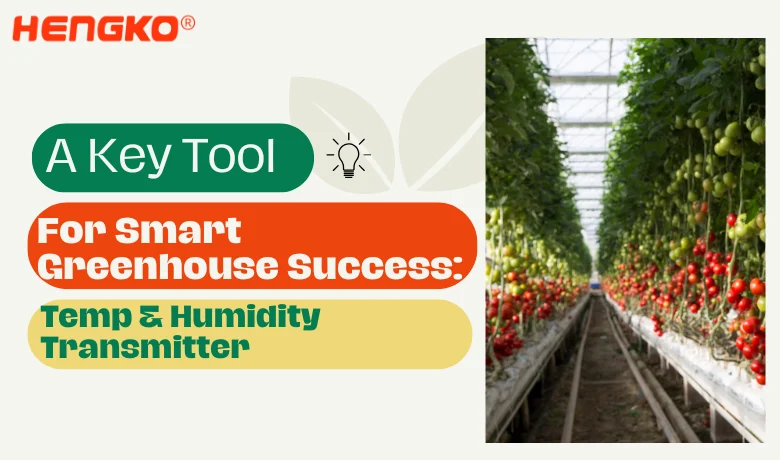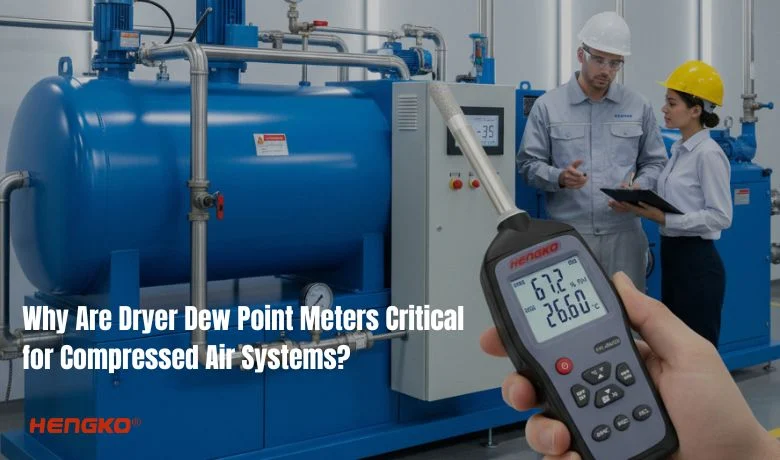Wprowadzenie
In the realm of modern agriculture, smart greenhouses are leading the charge toward sustainable and efficient food production. These innovative structures rely on advanced technologies to create optimal environments for crops. Among these technologies, the temperature and humidity transmitter stands out as a critical component.
But what makes this tool so essential for smart greenhouse success? Let’s explore how it helps create precise growing conditions, ensuring healthy plants and maximum yield.

What is a Smart Greenhouse?
A smart greenhouse is an advanced agricultural system that integrates cutting-edge technology to create an optimized environment for plant growth. Unlike traditional greenhouses, smart greenhouses use a variety of interconnected systems that automatically monitor and adjust factors such as temperature, humidity, light, CO2 levels, and irrigation.
These systems include:
●Environmental Control Systems: These ensure that temperature, humidity, and light levels remain within ideal ranges for plant growth, creating a controlled environment that adapts to changing external conditions.
●Temperature and Humidity Monitoring Systems: Sensors continuously track the internal conditions of the greenhouse, providing real-time data to adjust environmental factors and ensure plants thrive.
●Automated Irrigation Systems: Using soil moisture levels and weather forecasts, the irrigation system ensures that plants receive the right amount of water at the right time, preventing water waste.
●Climate Regulation Systems: This system includes heating, cooling, and ventilation systems that maintain optimal climate conditions, while shading systems adjust light levels when necessary.
The Role of Temperature and Humidity in Greenhouses
Temperature and humidity are two of the most influential factors in plant growth. An imbalance in either can lead to issues such as:
-Stunted growth: When temperatures are too low or too high, plants may fail to grow properly.
-Pest and disease outbreaks: High humidity levels can create the perfect breeding ground for pests and fungal diseases.
–Water stress: Inadequate humidity can increase plant transpiration, leading to dehydration and stress.
By maintaining precise control over these factors, smart greenhouses can mitigate risks and promote optimal growth conditions.
Why Temperature and Humidity Transmitters Are Essential
A temperature and humidity transmitter is more than just a sensor. It’s a sophisticated device that continuously monitors environmental conditions and sends real-time data to a centralized system.
Here’s why it’s indispensable:
1.Accurate Monitoring
Temperature and humidity transmitters provide accurate, real-time measurements, ensuring that even minor fluctuations are detected and addressed promptly. High-precision sensors allow farmers to fine-tune the greenhouse environment, ensuring every crop’s specific needs are met.
2.Automation Support
These transmitters integrate seamlessly with smart systems, triggering automated adjustments like opening vents, activating cooling systems, or adjusting irrigation to maintain ideal conditions. For instance, when humidity levels rise too high, the system can automatically activate dehumidifiers or ventilation systems, preventing the onset of fungal diseases.
3.Data-Driven Insights
The data collected by transmitters enables farmers to analyze trends, optimize growing strategies, and make informed decisions for future crop cycles. Over time, this data helps identify patterns such as seasonal temperature variations or crop-specific humidity preferences, which can significantly enhance productivity.
4.Energy Efficiency
By maintaining optimal conditions, transmitters reduce the need for excessive heating, cooling, or misting, ultimately saving energy and costs. Smart greenhouses equipped with these devices can operate more sustainably, aligning with global efforts to reduce carbon footprints in agriculture.
Advanced Features of Modern Transmitters
Modern temperature and humidity transmitters come with a variety of advanced features that make them indispensable in smart greenhouses:
*Wireless Connectivity: Many devices now support wireless communication, allowing seamless integration with cloud-based systems for remote monitoring and control.
*Multiple Sensing Capabilities: Advanced transmitters can measure additional parameters such as CO2 levels, soil moisture, and light intensity, offering a comprehensive view of the greenhouse environment.
*Customizable Alerts: Farmers can set thresholds for temperature and humidity levels, receiving instant alerts via smartphones or computers if conditions deviate from the desired range.
*Durable Design: Many transmitters are designed to withstand harsh greenhouse conditions, such as high humidity, temperature fluctuations, and exposure to chemicals.
Applications of Temp&Humidity Transmitters in Smart Greenhouses
Temperature and humidity transmitters are used in various aspects of greenhouse management, including:
-Climate Control: Ensuring the perfect balance of warmth and moisture for each crop type. This helps create an environment where plants can thrive, leading to higher yields and better quality.
-Disease Prevention: Monitoring and controlling humidity to prevent fungal diseases like powdery mildew. By keeping humidity within optimal ranges, the risk of pathogen growth is minimized.
-Irrigation Optimization: By combining temperature and humidity data with soil moisture levels, smart irrigation systems can deliver water precisely when and where it’s needed, reducing waste and promoting healthy root systems.
-Post-Harvest Storage: Maintaining ideal conditions for harvested crops to preserve their quality. Proper temperature and humidity levels can extend the shelf life of produce, reducing losses.
-Multi-Zone Management: In large greenhouses with multiple zones, transmitters help maintain specific environmental conditions for different crops, ensuring each zone operates independently and efficiently.
Choosing the Right Transmitter For Your Need
When selecting a temperature and humidity transmitter for your smart greenhouse, consider the following factors:
-Accuracy and Stability: Look for devices with high precision and long-term reliability. Sensors with minimal drift over time ensure consistent performance.
-Ease of Integration: Ensure compatibility with your greenhouse’s control systems, including software and hardware interfaces.
-Durability: Opt for transmitters that can withstand greenhouse conditions, including high humidity, temperature variations, and exposure to chemicals.
-Maintenance Requirements: Choose devices that are easy to calibrate and maintain, ensuring they remain functional over long periods.
-Scalability: If you plan to expand your greenhouse operations, ensure the chosen transmitters can be easily scaled to accommodate additional zones or areas.
Explore HENGKO Temperature and Humidity Transmitters
HENGKO offers a range of temperature and humidity transmitters designed specifically for smart greenhouse applications.
-Our products are known for their high precision, robust durability, and seamless integration with modern greenhouse systems.
-Featuring advanced sensors with minimal drift, they provide reliable data to help you maintain optimal growing conditions.
-Easy to install, calibrate, and scale, HENGKO transmitters are the perfect solution for greenhouses of all sizes.
With a focus on energy efficiency and long-term reliability, HENGKO ensures that your investment translates into healthier crops and higher yields.
Real-World Benefits of Transmitters
Farmers using temperature and humidity transmitters in smart greenhouses have reported significant improvements in productivity and efficiency. For example:
A tomato grower in a smart greenhouse observed a 20% increase in yield after implementing real-time monitoring and automated climate control.
An orchid farm reduced disease outbreaks by 30% by maintaining precise humidity levels, resulting in healthier, more vibrant flowers.
A leafy green producer cut energy costs by 15% by optimizing ventilation and heating systems based on data from transmitters.
Wnioski
Temperature and humidity transmitters are essential for optimizing conditions in smart greenhouses, ensuring healthier crops, higher yields, and energy efficiency. By investing in the right transmitter, you can create a sustainable, productive environment that supports long-term growth and success.






